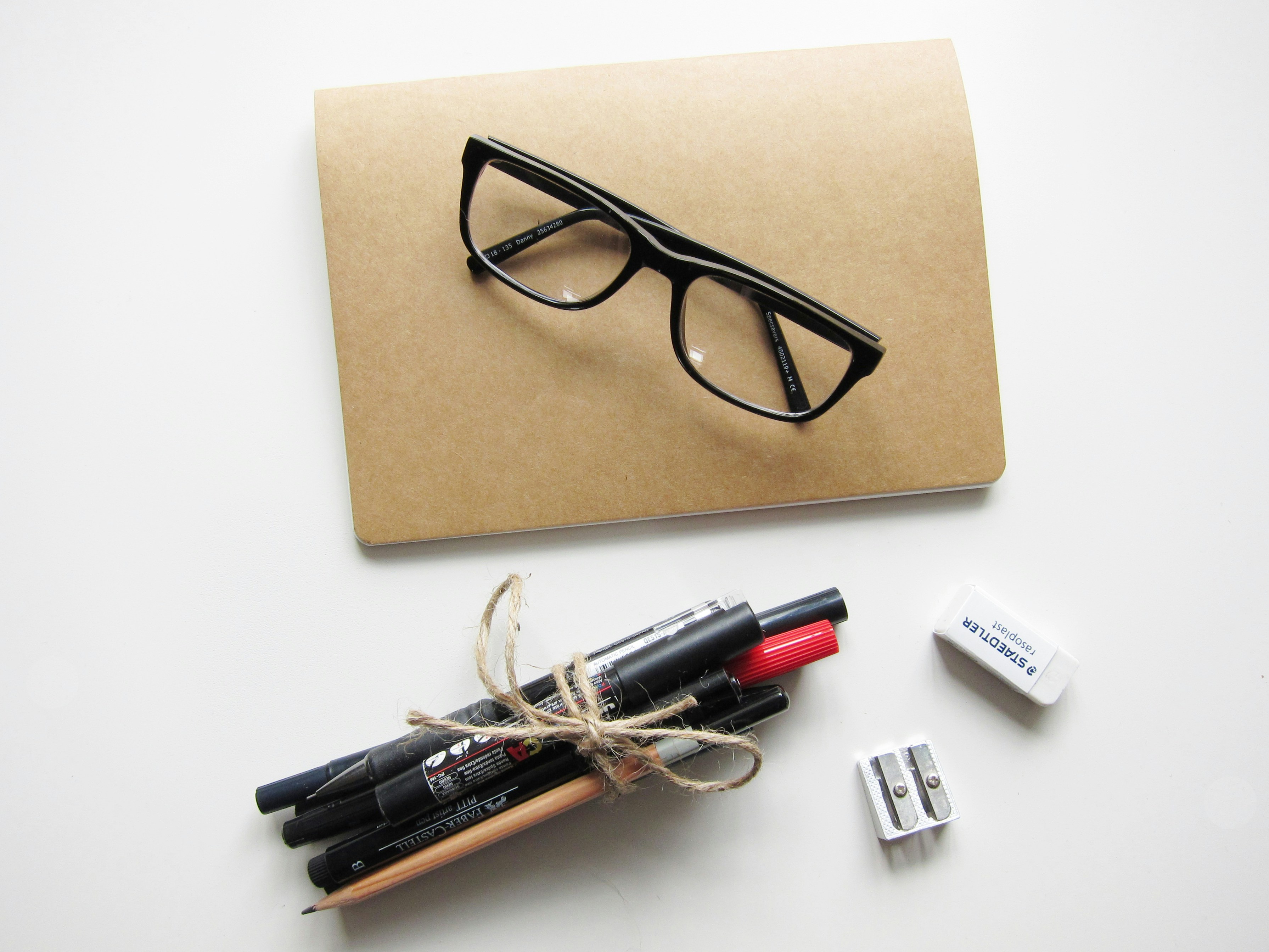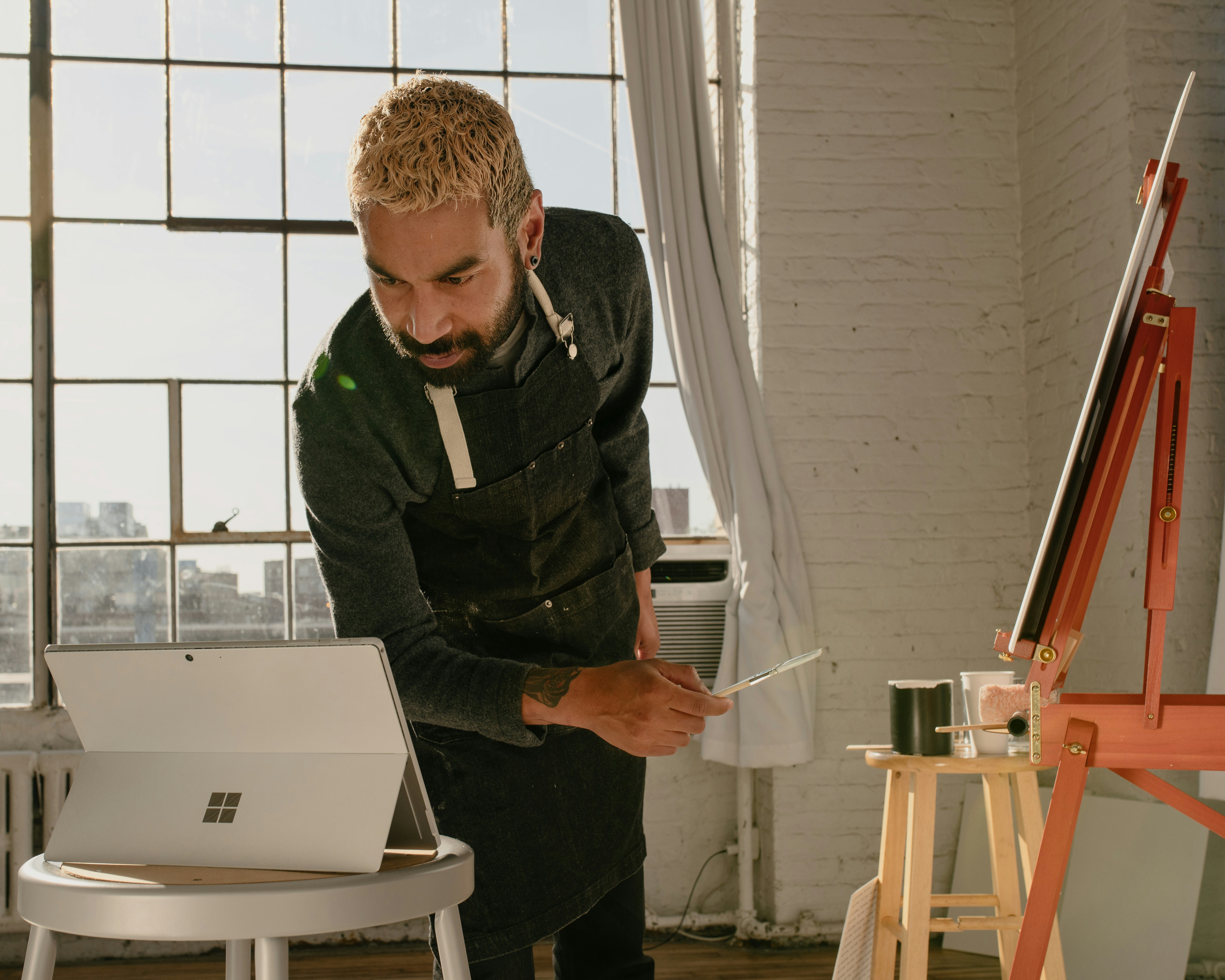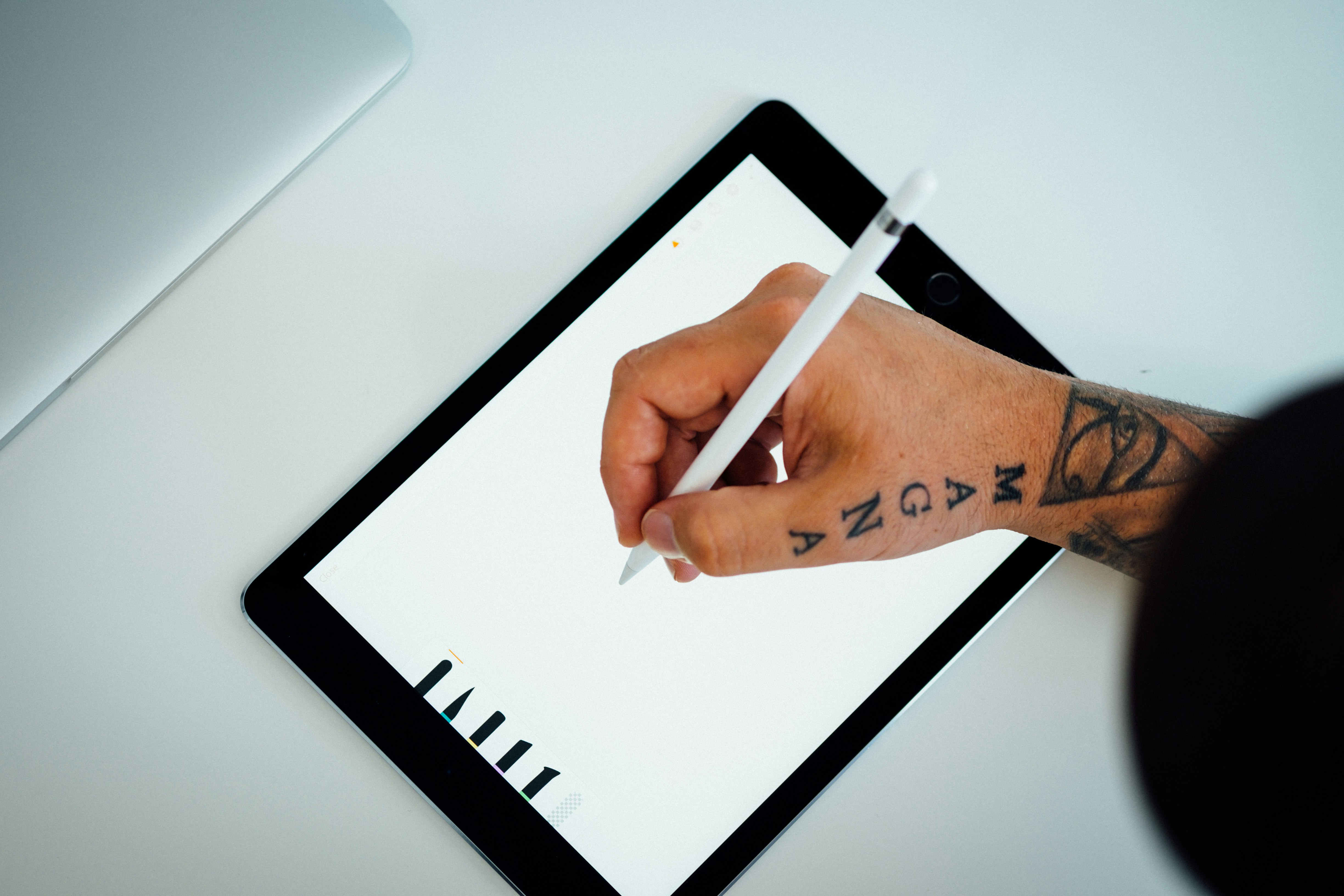If you have a passion for art and a desire to work independently, becoming a freelance artist could be the perfect career path for you. This article will provide you with valuable tips and insights on how to establish yourself as a successful freelance artist. From building a strong portfolio to marketing your work effectively, we will guide you through the process step by step. Whether you’re an aspiring painter, illustrator, or graphic designer, this article will equip you with the knowledge and tools you need to thrive in the freelance art industry. So, grab your paintbrushes or digital pen and get ready to embark on an exciting artistic journey!
Choose Your Artistic Medium
Explore Different Art Forms
As you begin your journey as a freelance artist, it’s important to explore various art forms to find the one that resonates with you the most. Whether it’s painting, drawing, sculpture, photography, or even digital art, each medium has its own unique qualities and expressive potential. Visit art galleries, museums, and art supply stores to expose yourself to different art forms and gain inspiration. Embrace this phase of exploration as an opportunity to discover which medium speaks to your creative sensibilities.
Consider Your Skills and Interests
While exploring different art forms, take note of the skills you possess and the subjects you are passionate about. Are you naturally skilled in drawing realistic portraits? Do you have a knack for capturing the beauty of nature through photography? Reflecting upon your skills and interests will help you narrow down your options and choose a medium that aligns with your strengths. This self-awareness will serve as a solid foundation for your artistic journey.
Narrow Down Your Choice
After exploring different art forms and considering your skills and interests, it’s time to make a decision and commit to a specific medium. Choose the artistic medium that not only sparks joy in you but also brings out the best in your artistic abilities. Remember, you can always experiment and incorporate different mediums into your work as you develop your skills, but having a primary medium will allow you to specialize and showcase your unique style.
Develop Your Artistic Skills
Practice Consistently
To excel as a freelance artist, consistent practice is key. Make it a habit to set aside dedicated time each day to work on honing your skills. Whether it’s painting, drawing, or any other art form, regular practice will not only improve your technique but also train your creative muscles. Set achievable goals for yourself and celebrate small victories along the way. Remember, progress is made through consistent effort and dedication.
Take Art Classes or Workshops
While self-study is valuable, taking art classes or workshops can provide invaluable guidance and mentorship from experienced artists. Look for local art schools, community centers, or online platforms that offer courses in your chosen medium. These classes will not only teach you new techniques and skills but also provide you with a supportive community of fellow artists who can offer feedback and inspiration.
Study from Online Resources
In today’s digital age, the internet is a treasure trove of resources for artists. Take advantage of online tutorials, video lessons, and blogs that cater specifically to your chosen medium. Websites like YouTube, Skillshare, and Udemy offer a wide range of art courses taught by professionals. Remember to focus on reputable sources and take the time to practice and apply what you learn from these resources.
Engage in Artistic Communities
Joining artistic communities and engaging with fellow artists is a wonderful way to gain feedback, find inspiration, and grow as an artist. Attend local art events, join online forums, and participate in critique sessions. By immersing yourself in these communities, you will have the opportunity to learn from others, build connections, and receive valuable insights that will help you refine your artistic skills.
Build a Diverse Portfolio
Collect and Document Your Artwork
Start building your portfolio by collecting and documenting your artwork. Take high-quality photographs or scans of your pieces and organize them in a cohesive and easily accessible manner. Keep track of the date, medium, and size of each artwork for reference. Your portfolio is a representation of your artistic journey and progress, so be diligent in capturing the essence of each piece.
Showcase Various Styles and Techniques
A diverse portfolio that showcases a range of styles and techniques will demonstrate your versatility as an artist. Experiment with different approaches, explore new themes, and push the boundaries of your chosen medium. By incorporating a variety of styles and techniques into your portfolio, you will attract a wider audience and demonstrate your ability to adapt to different artistic demands.
Include Variety in Subject Matter
While it’s important to showcase your technical skills, remember to include a variety of subject matter in your portfolio. Experiment with different themes, genres, and subjects to demonstrate your ability to handle diverse projects. Whether it’s landscapes, portraits, still life, or abstract art, a well-rounded portfolio will not only exhibit your artistic capabilities but also appeal to potential clients or galleries.
Get Feedback and Refine Your Work
Seeking feedback is an essential part of the artistic process. Display your portfolio to trusted friends, fellow artists, or art professionals and ask for constructive criticism. Be open to their suggestions and use their feedback to refine your work. Remember, feedback can be the catalyst for growth and improvement, helping you elevate your skills and develop your unique artistic voice.
Establish Your Brand
Define Your Artistic Identity
Establishing a clear artistic identity is critical in setting yourself apart in a competitive art market. Take some time to reflect on your artistic vision, the themes you want to explore, and the emotions you want to convey through your work. Define your artistic style and values, and let these choices guide your artistic journey. Embrace your uniqueness and let it shine through in your artwork.
Create a Logo and Branding Materials
As a freelance artist, creating a logo and branding materials will help establish a professional and cohesive visual identity. Design a logo that represents your artistic style, and use it consistently across all your promotional materials. Develop a color palette, font, and overall aesthetic that aligns with your artwork. These small details will contribute to a strong, recognizable brand that sets you apart from other artists.
Develop an Artist Statement
Crafting an artist statement is an essential step in conveying your artistic intentions and reasoning behind your work. This concise written statement should describe your artistic process, inspirations, and the concepts you explore. It serves as a window into your artistic world and helps people connect with your art on a deeper level. Keep your artist statement authentic, concise, and engaging.
Maintain a Consistent Visual Identity
Consistency is key when it comes to establishing your brand as a freelance artist. Ensure that your website, social media profiles, and promotional materials all reflect a consistent visual identity. Use your chosen logo, color palette, and fonts across all platforms. By maintaining a cohesive visual identity, you will strengthen your brand recognition and create a professional impression for potential clients and art enthusiasts.
Create an Online Presence
Build a Professional Website
In today’s digital age, having a professional website is essential for any freelance artist. Your website will serve as a centralized hub for potential clients and art enthusiasts to explore your portfolio and learn more about your artistic journey. Invest in a visually appealing and user-friendly website that showcases your artwork beautifully. Include an about section, contact information, and links to your social media profiles.
Create Social Media Accounts
Social media can be a powerful tool for artists to connect with a broader audience and gain exposure. Create accounts on popular platforms like Instagram, Facebook, or Twitter, and regularly share updates about your artwork, creative process, and upcoming events. Engage with your followers by responding to comments, participating in art challenges, and collaborating with other artists. Social media can help you build a loyal following and attract potential clients.
Share Your Artwork Online
Utilize your online platforms to share your artwork regularly. Consistently post high-quality images of your latest pieces, accompanied by engaging captions that provide insights into your creative process. Experiment with different hashtags relevant to your artistic style and medium to expand your reach and attract new followers. Remember, the more you share your work, the greater the chances of it being discovered by potential clients.
Engage with Your Audience
Building a strong online presence goes beyond just sharing your artwork. Take the time to engage with your audience by responding to comments, answering questions, and showing appreciation for their support. Engaging with your followers will not only strengthen your connection with them but also foster a sense of community around your art. Actively participating in discussions and collaborating with fellow artists will further enhance your online presence and visibility.
Network and Collaborate
Attend Art Events and Exhibitions
Attending art events and exhibitions is a fantastic way to network, gain exposure, and connect with other artists, collectors, and art professionals. Research local art events, both physical and virtual, and make it a point to attend as many as possible. Engaging with the art community in person will provide you with valuable networking opportunities and potential collaborations. Be sure to bring business cards and a confident smile!
Join Artistic Organizations and Groups
Joining artistic organizations and groups can offer a supportive community, valuable resources, and collaborative opportunities. Look for local artist societies, online forums, or meetup groups dedicated to your chosen medium or artistic interests. These communities will provide you with a platform to collaborate, learn, and grow alongside fellow artists. Actively participate in discussions, share your knowledge, and support others in their artistic endeavors.
Reach out to Other Artists
Don’t be afraid to reach out to other artists whose work you admire or who inspire you. Send a friendly message expressing your admiration and appreciation for their art. Building relationships with other artists can lead to mentorship opportunities, collaborative projects, or even joint exhibitions. Remember, the art community is often supportive and open to connecting with fellow creatives.
Seek Collaborative Opportunities
Collaborating with other artists can elevate your work and expand your creative horizons. Seek opportunities to work on joint projects, whether it’s a group exhibition, a mural, or an artistic collaboration. Collaborations not only allow you to learn from others but also expose your work to new audiences. Embrace the chance to push boundaries, experiment with new ideas, and create something unique by joining forces with other like-minded artists.
Market Your Artwork
Identify Your Target Audience
To effectively market your artwork, it’s crucial to identify your target audience. Consider the demographic, interests, and preferences of those who would be most likely to connect with and appreciate your art. Understanding your audience will help you tailor your marketing efforts, select appropriate platforms to showcase your work, and create artwork that resonates with your intended viewers.
Utilize Online Marketplaces
Online marketplaces like Etsy, Saatchi Art, or ARTDEX offer a convenient platform to sell your artwork to a global audience. Create a profile on these sites, upload high-quality images of your pieces, write compelling descriptions, and set reasonable prices. Regularly update your listings and promote your online store through your website and social media platforms. Online marketplaces provide exposure, sales opportunities, and a way to connect with potential buyers directly.
Participate in Art Fairs and Shows
Art fairs, exhibitions, and shows provide excellent opportunities to connect with art enthusiasts and potential buyers in person. Research upcoming art events in your area or consider participating in virtual fairs or online exhibitions. Prepare a professional display of your artwork and be ready to engage with visitors, answer questions, and establish connections. These events provide valuable exposure, networking opportunities, and the chance to sell your artwork directly.
Promote Your Art through Online and Offline Channels
Promotion is key to gaining visibility for your artwork. Utilize both online and offline channels to promote your art. In addition to your website and social media platforms, consider writing guest blog posts, being featured in art publications, or even hosting your own virtual or physical art show. Offline, you can collaborate with local businesses, approach galleries, or donate artwork to charity events to create buzz and reach a wider audience.
Manage Your Finances
Set Artwork Pricing
Determining the prices for your artwork can be challenging, but it’s an important aspect of your freelance career. Consider factors such as time invested, materials used, size, and demand when pricing your pieces. Strive to find a balance between affordability for potential buyers and fair compensation for your time and talent. Do research on market trends and consult fellow artists or galleries if needed to ensure your pricing is competitive and reasonable.
Budget for Art Supplies and Business Expenses
Managing your finances as a freelance artist involves careful budgeting. Art supplies can be costly, so factor in the cost of your materials when setting your prices. Additionally, consider any business expenses such as website hosting fees, marketing costs, and event participation fees. Striking a balance between affordability and sustaining your artistic practice will ensure a healthy financial foundation for your art career.
Track Your Income and Expenses
Maintaining accurate financial records is essential for managing your freelance art business effectively. Keep track of your income from art sales, grants, commissions, or any other sources. Likewise, diligently record your expenses related to art supplies, marketing efforts, or any other business expenditures. This will help you monitor your financial health, track your progress, and make informed decisions about your art business.
Consider Professional Accounting Services
As your freelance art business grows, it may be beneficial to seek professional accounting services. An accountant can assist with tasks such as tax preparation, financial planning, and budgeting advice. Their expertise in managing finances for artists can provide you with a clear understanding of your financial situation, allowing you to focus on your art while ensuring your financial responsibilities are met.
Develop Professional Communication Skills
Respond to Inquiries and Commissions Professionally
Prompt and professional communication is crucial when responding to inquiries and commission requests. Reply to emails, messages, or phone calls in a timely manner, addressing any questions or concerns the client may have. Provide clear information about pricing, timelines, and any other relevant details. Professionalism and excellent communication skills will leave a positive impression on potential clients, enhancing your reputation as a reliable and professional freelance artist.
Negotiate Rates and Contracts
When it comes to negotiating rates and contracts, confidence and clarity are key. Be prepared to discuss your rates based on factors such as the complexity of the project, your level of experience, and the estimated time required. Establish clear terms and conditions in written contracts to protect both parties’ interests. Honesty and transparency in negotiations will help foster positive client relationships and ensure a fair and professional exchange.
Maintain Timely and Clear Communication
Maintaining open lines of communication is essential throughout the artistic process. Keep your clients informed about project progress, any changes, and estimated completion dates. Respond to messages and emails promptly, clarifying any uncertainties or addressing any issues that may arise. Clear and timely communication will build confidence and trust with your clients, resulting in successful collaborations and a satisfied client base.
Handle Criticism and Feedback Gracefully
As an artist, it’s important to embrace feedback and handle criticism gracefully. Artistic growth stems from being open to constructive criticism and understanding that feedback can help you improve your skills and artistic vision. When receiving feedback, listen attentively, ask clarifying questions, and respond with gratitude. Use criticism as an opportunity for growth and learning, refining your techniques and expanding your artistic horizons.
Continuously Learn and Grow
Stay Updated with Art Trends
To stay relevant as a freelance artist, it’s crucial to stay updated with art trends and developments in the art industry. Follow art publications, attend art events, and engage with the art community to keep yourself informed. While it’s essential to maintain your unique artistic voice, being aware of current trends can inspire new ideas or provide insights into the demands and preferences of potential clients.
Attend Workshops and Skill Enhancement Programs
Continuing education plays a significant role in an artist’s growth. Attend workshops, skill enhancement programs, or art retreats to learn new techniques, gain valuable insights from experienced artists, and broaden your artistic perspective. These opportunities allow you to refine your skills, experiment with new artistic approaches, and engage with like-minded individuals who share your passion for art.
Seek Mentorship from Experienced Artists
Finding a mentor in the art world can greatly accelerate your artistic growth. Seek out experienced artists who specialize in your medium or genre and approach them respectfully. A mentor can offer guidance, support, and expertise based on their years of experience. Learn from their successes and failures, ask for their feedback, and remain open to their advice. A mentorship can be an invaluable asset as you navigate your freelance art career.
Experiment with New Techniques and Styles
Aim to continuously challenge yourself and expand your artistic boundaries by experimenting with new techniques and styles. Step out of your comfort zone and explore different artistic approaches or mediums. Whether it’s trying out a new color palette, incorporating mixed media, or experimenting with digital art tools, embracing experimentation will keep your art fresh and dynamic. Remember, growth and innovation are fostered through pushing the boundaries of your artistic practice.
By following these key steps, you can pave your way to becoming a successful freelance artist. Remember, the journey may have its ups and downs, but with persistence, passion, and dedication, you can turn your artistic dreams into a fulfilling reality. Embrace the process, never stop learning, and let your art become a true reflection of your creative spirit.




